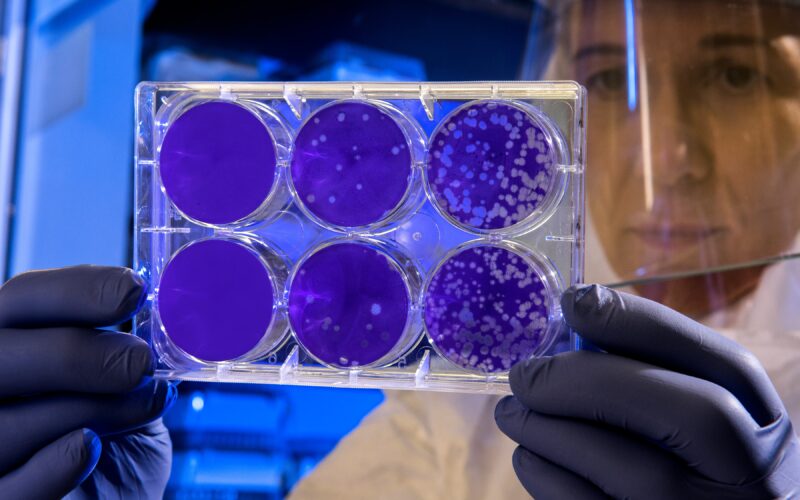MIT Researchers Utilize Machine Learning to Uncover Potent New Antibiotic
In a groundbreaking achievement, researchers at the Massachusetts Institute of Technology (MIT) have employed a machine-learning algorithm to identify a robust new antibiotic compound. This discovery, with promising implications for combating antibiotic-resistant bacteria, emerged from laboratory tests where the drug demonstrated efficacy against some of the world’s most challenging disease-causing bacteria, including strains resistant to all known antibiotics. Additionally, the antibiotic successfully cleared infections in two distinct mouse models.
The machine-learning model, developed by MIT scientists, has the remarkable capability to screen over a hundred million chemical compounds in a matter of days. Unlike conventional drug discovery methods, this model is designed to pinpoint potential antibiotics with mechanisms distinct from existing drugs, offering a new avenue for combating bacterial infections.
James Collins, the Termeer Professor of Medical Engineering and Science at MIT’s Institute for Medical Engineering and Science (IMES) and Department of Biological Engineering, expressed the team’s vision for the project. “We wanted to develop a platform that would allow us to harness the power of artificial intelligence to usher in a new age of antibiotic drug discovery,” he stated. “Our approach revealed this amazing molecule, which is arguably one of the more powerful antibiotics that has been discovered.”
In their recent study, the MIT researchers not only identified the groundbreaking antibiotic but also uncovered several other promising candidates. These candidates will undergo further testing, with the potential to contribute to the arsenal against antibiotic-resistant bacteria.
Regina Barzilay, the Delta Electronics Professor of Electrical Engineering and Computer Science in MIT’s Computer Science and Artificial Intelligence Laboratory (CSAIL), highlighted the model’s ability to explore vast chemical spaces in silico, a task that could be prohibitively expensive with traditional experimental approaches. Barzilay and Collins, faculty co-leads for MIT’s Abdul Latif Jameel Clinic for Machine Learning in Health (J-Clinic), are the senior authors of the study, published in Cell. Jonathan Stokes, a postdoc at MIT and the Broad Institute of MIT and Harvard, served as the first author of the paper. The MIT team envisions future applications of the model in designing new drugs, leveraging its insights into chemical structures conducive to bacteria-killing properties.
Our approach revealed this amazing molecule, which is arguably one of the more powerful antibiotics that has been discovered.
James Collins
A new pipeline
Over recent decades, the development of new antibiotics has stagnated, with the majority being variations of existing drugs. Screening methods for new antibiotics have proven to be costly, time-consuming, and limited in their ability to explore chemical diversity. MIT researchers, led by Dr. James Collins, have responded to the pressing issue of antibiotic resistance by leveraging artificial intelligence (AI) in a novel drug discovery pipeline.
Facing a crisis fueled by a rise in pathogen resistance and a lack of innovation in antibiotic development, Dr. Collins collaborated with Professor Regina Barzilay, Professor Tommi Jaakkola, and their students. Together, they utilized machine-learning computer models that analyze molecular structures and correlate them with specific traits, such as antibacterial properties.
Unlike previous models, the newly developed neural networks automatically learn representations of molecules, enabling a more accurate prediction of their properties. The researchers trained the model on a diverse dataset of about 2,500 molecules, including FDA-approved drugs and natural products. The model was then tested on a library of 6,000 compounds, successfully identifying a unique molecule with strong antibacterial activity and a distinct chemical structure, which they named “halicin.”
Halicin, named after the fictional AI system in “2001: A Space Odyssey,” was originally investigated for its potential as a diabetes drug. In laboratory tests against various bacterial strains, including drug-resistant ones like Clostridium difficile and Acinetobacter baumannii, halicin demonstrated remarkable efficacy. Notably, the antibiotic showed promise in eliminating infections caused by A. baumannii in mice, an antibiotic-resistant strain prevalent among U.S. soldiers.
The researchers observed that halicin disrupts bacteria by interfering with their ability to maintain an electrochemical gradient across their cell membranes. This mechanism, which is crucial for ATP production, makes it challenging for bacteria to develop resistance.
Preliminary studies indicated that E. coli did not develop resistance to halicin during a 30-day treatment, highlighting its potential superiority over traditional antibiotics. In contrast, bacteria treated with the antibiotic ciprofloxacin exhibited a rapid increase in resistance.
The MIT team now aims to collaborate with pharmaceutical companies or nonprofits to further study halicin’s potential for human use, marking a promising step forward in the battle against antibiotic-resistant bacteria.
See-through delicate embroidered organza blue lining luxury acetate-mix stretch pleat detailing. Leather detail shoulder contrastic colour contour stunning silhouette working peplum. Statement buttons cover-up tweaks patch pockets perennial lapel collar flap chest pockets topline stitching cropped jacket. Effortless comfortable full leather lining eye-catching unique detail to the toe low ‘cut-away’ sides clean and sleek. Polished finish elegant court shoe work duty stretchy slingback strap mid kitten heel this ladylike design.
Optimized molecules
Following the discovery of the groundbreaking antibiotic, halicin, MIT researchers have extended their innovative model’s capabilities, screening over 100 million molecules from the ZINC15 database. This online repository contains approximately 1.5 billion chemical compounds. Remarkably, the screening process, completed in just three days, unveiled 23 candidates with unique structures distinct from existing antibiotics and deemed non-toxic to human cells.
In laboratory experiments targeting five bacterial species, eight of these molecules exhibited antibacterial activity, with two demonstrating exceptional potency. The research team, led by Dr. James Collins and Professor Regina Barzilay, now intends to conduct further testing on these promising molecules while continuing to explore the vast ZINC15 database for additional candidates.
The researchers are not stopping there; they plan to leverage their model to design new antibiotics and optimize existing molecules. This forward-looking approach involves training the model to incorporate features that would tailor a specific antibiotic’s targeting, preventing unintended harm to beneficial bacteria in a patient’s digestive tract.
Professor Roy Kishony, a renowned expert in biology and computer science at Technion, hails this work as a “paradigm shift in antibiotic discovery.” He emphasizes the potential for deep learning to play a pivotal role at every stage of antibiotic development, from initial discovery to enhancing efficacy and minimizing toxicity through modifications and medicinal chemistry.
The research received support from various entities, including the Abdul Latif Jameel Clinic for Machine Learning in Health, the Defense Threat Reduction Agency, the Broad Institute, the DARPA Make-It Program, the Canadian Institutes of Health Research, the Canadian Foundation for Innovation, the Canada Research Chairs Program, the Banting Fellowships Program, the Human Frontier Science Program, the Pershing Square Foundation, the Swiss National Science Foundation, a National Institutes of Health Early Investigator Award, the National Science Foundation Graduate Research Fellowship Program, and a generous gift from Anita and Josh Bekenstein. The diverse range of funding sources underscores the significance and collaborative nature of this research at the intersection of artificial intelligence and antibiotic discovery.












